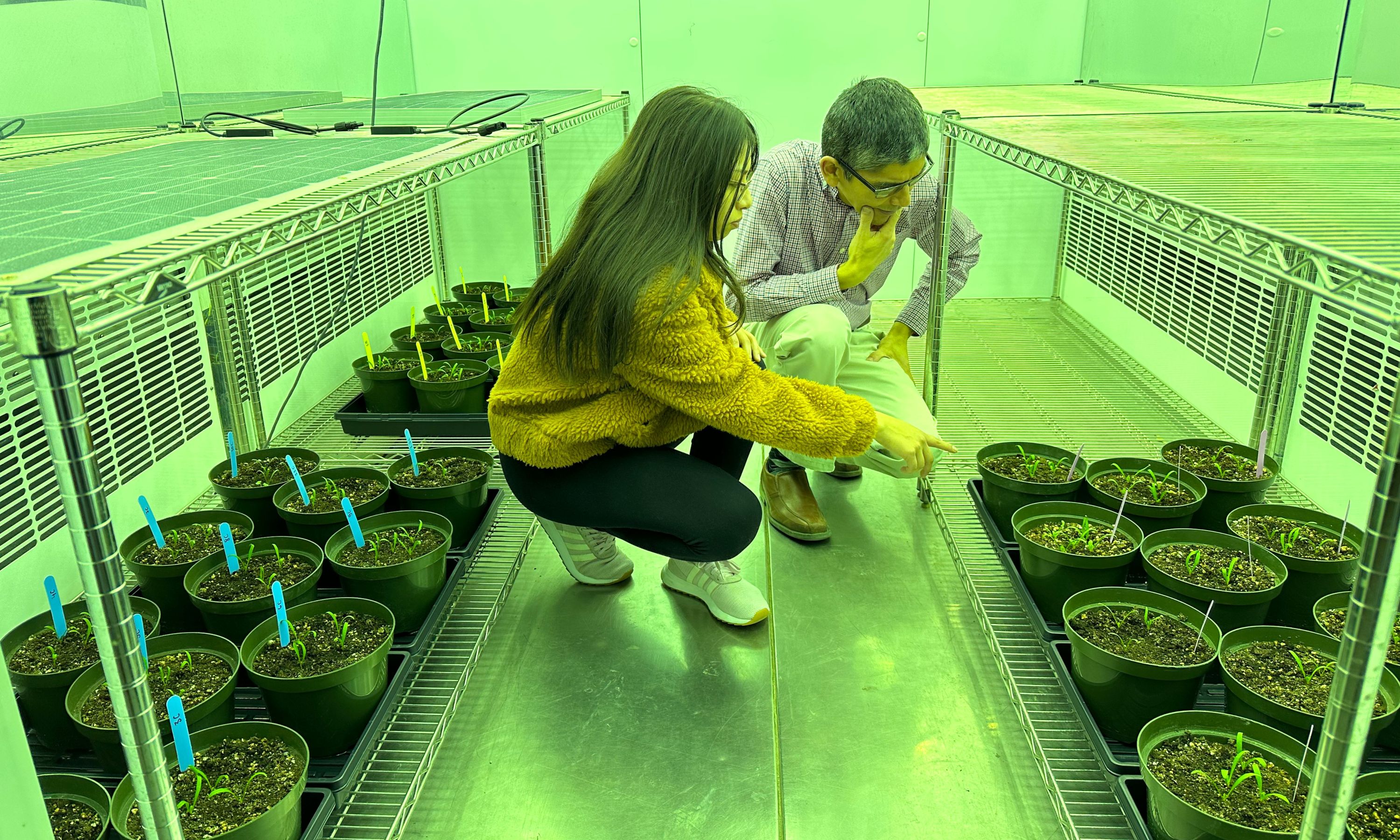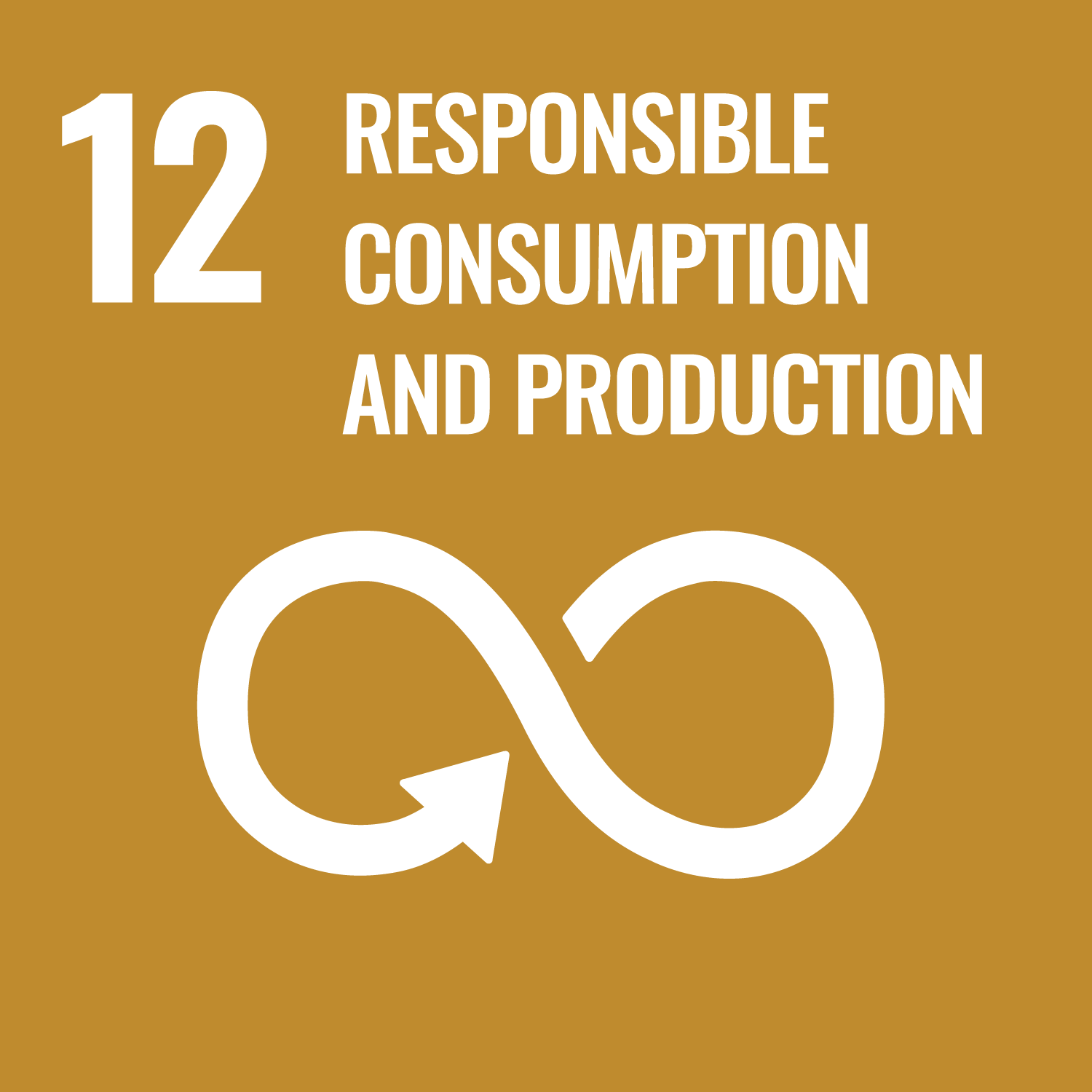Imagine growing greens in your back yard under a solar panel, and then juicing them in a blender powered by the same energy. A new University of Alberta project is working to make that a reality.
By growing spinach under different solar panels, two U of A researchers are measuring how the process affects both plant growth and the electrical output of the panels.
Known as agrivoltaics, the fairly new sustainable practice integrates solar panels with crops, making simultaneous use of land for both food and energy production.
Agrivoltaics has the potential to address several pressing issues around sustainability, says Guillermo Hernandez Ramirez, an associate professor and soil scientist in the Faculty of Agricultural, Life & Environmental Sciences.
“It brings together major challenges we have ahead of us: the energy transition to renewable energy sources and the questions of feeding the world and addressing issues of climate action,” he says.
Agrivoltaics has other benefits besides dual land use and food security; it could also reduce greenhouse gas emissions and make more efficient use of water.
And it’s scalable to serve both rural and especially urban agriculture, by making use of back yards and city green spaces to grow food and generate electricity, he notes.
That in turn helps people see sustainability as a way of life, Hernandez Ramirez believes.
“It brings this idea of connection. By having agrivoltaics in urban settings, people can experience what it’s like to be able to produce both food and electricity.”
“We can’t source all the food and energy we need from agrivoltaics, but it makes a contribution, and people can have that context. It builds a sense of caring about where these things are coming from.”
Win-win for plants and solar panels
The U of A pilot project is an initial step in exploring the potential benefits of agrivoltaics, says research intern Camila Quiroz, who is running the experiment.
“The field hasn’t been researched much, but more knowledge will be necessary in the near future for us to continue living in the world,” she says.
In the 25-day project, conducted in a growth chamber, the researchers compared the growth of spinach plants under three different conditions — with no solar panel or shaded by either a thin or a thick panel — and also measured how much electricity can be harvested from each type of panel.
Agrivoltaics tends to have benefits for both plants and panels, she notes.
“Solar panels have better output with lower temperatures, so by placing the plants under the panels, it creates a cooling effect that helps the panels be more efficient.”
In turn, leafy plants like spinach and lettuce, along with succulent produce like berries, corn, onions, tomatoes and grapes, need shade to thrive — which the solar panels in this experiment provide.
Early results show promise
The month-long experiment showed promising results, the researchers note.
Under the solar panels, the spinach plants consumed up to 17 per cent less water, and though their growth was slower than without the panels, the plants’ overall health remained high as they neared harvest weight.
“It shows that using agrivoltaics is not detrimental to plant health,” she notes.
The solar panels also generated power output of 10 watts, enough to power electronic devices such as mobile phones, tablets, LED lamps or small appliances.
“This project is a step forward in showing that as we harvest solar energy for use in our homes, for example, we could also be growing nutritious food at the same time,” says Hernandez Ramirez.
Once the project data are fully analyzed, the results will be published in a scientific paper, and Quiroz also plans to produce a how-to guide for the public “so people can start practicing some of these things.”
Hernandez Ramirez also hopes to share the guide with the City of Edmonton as a useful example of how agrivoltaics could be optimized to the city’s weather conditions.
“This is an example of a very good project that would help the city in its quest to do more sustainable development.”
Next steps are to secure research funding to further test agrivoltaics with other plants such as berries and more vegetables, explore different angles and arrangements of solar panels and test them in outdoor conditions like rain, he adds.
“Agrivoltaics is a whole new field of research and an option we want to keep exploring and find ways to implement, because it’s a win-win for society and for food and farming industries.”

